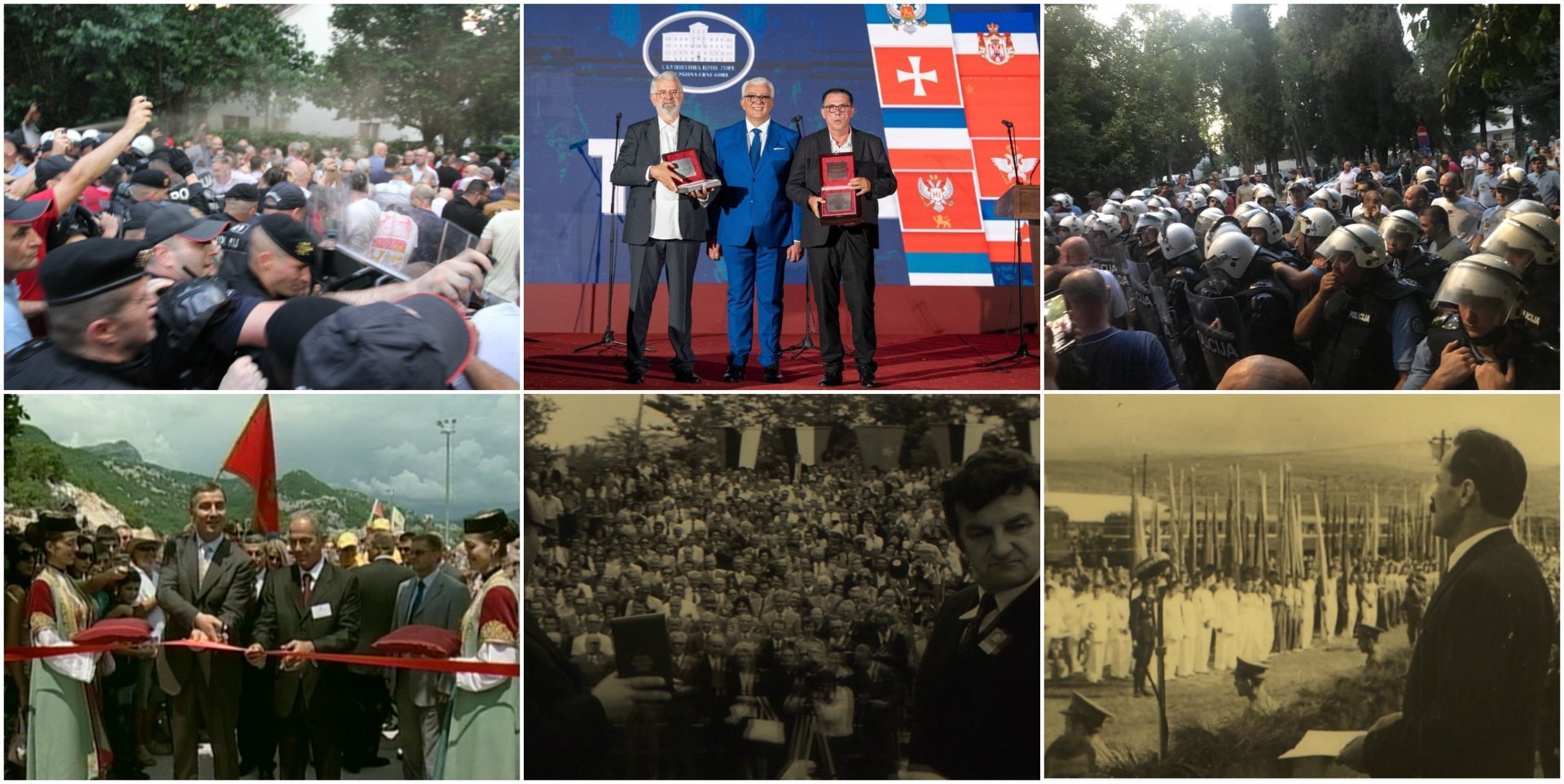Written by: Mirjana Kostić
On the eve of July 13, 2025, Montenegrin citizens protesting in front of the "Gorica" Villa were sprayed with pepper spray, while a denier of the Montenegrin nation – someone who once said he would “bury our country under a shovel of earth” – and his racist accomplice were awarded the nation’s highest honor. The Greater Serbian spectacle in the garden of Blažo Jovanović’s former villa, led by clergy, was orchestrated by the head of Montenegro’s occupation regime, Andrija Mandić.
Exactly a year earlier, on the day before July 13, the Chetnik vojvoda and his ally Milan Knežević – along with others accused in the 2016 coup attempt – were acquitted. That same day, while handing out the July 13 awards, Mandić bared his teeth in the heart of Cetinje, announcing plans to restore the Karađorđević chapel atop Lovćen.
July 13, 2023, was also on the brink of conflict. Thanks to the police, a group of clerical nationalists and criminals attempted to incite violence at the close of a patriotic gathering held to honor Statehood Day in Nikšić. Instead of confronting the provocateurs – armed with foreign flags and singing chauvinistic songs – the police fired tear gas at citizens peacefully celebrating their national holiday.
Only the July 13 of 2022, bore any superficial resemblance to earlier celebrations. On Uprising Day, major labor achievements were once commemorated, and significant infrastructure projects were presented as gifts to the people. The ceremonial opening of the most challenging section of the “Princess Ksenija” highway was the last major construction feat in Montenegro. That evening, the honor of delivering the keynote speech for this legacy project of the Democratic Party of Socialists was claimed by its former fiercest critic, Dritan Abazović, now wearing the prime minister’s suit. But even that celebration was overshadowed by a controversial statement Abazović made two days earlier in Potočari, at the Balkans’ most tragic site. There, he claimed that what happened in Srebrenica was "not genocide against Bosniaks, but against humans", and that the greatest crime in Europe since World War II "was not committed by armies, but by politicians".
This is what the timeline of July 13 looks like since Montenegro’s so-called “liberation” in August 2020. Alongside the Greater Serbian march dismantling the country's institutions and undermining its foundations, there has been a deliberate five-year campaign to humiliate national holidays, turning these historic dates into farce and stripping them of meaning.
But Montenegro’s antifascist roots run deep. The historical significance of July 13 stretches back even further, with its layered symbolism growing ever stronger. This sacred date marks Montenegro’s international recognition at the 1878 Berlin Congress, the first nationwide antifascist uprising in occupied Europe in 1941, and the inaugural session of the Montenegrin Antifascist Assembly in Kolašin in 1944.
In postwar Montenegro, the holiday was marked by major achievements. The youth railway from Nikšić to Titograd, built in just 15 months, was inaugurated on July 13, 1948. In the years and decades that followed, Uprising Day was commemorated with the unveiling of monuments on Gorica, Grahovo, Piva, and in Titograd – including the bust of Njegoš – and memorials to national heroes across the country. On July 13, 1975, the old capital Cetinje was awarded the Order of the Hero City – a “mark of honor for heroic Cetinje, always worthy of freedom.”
We remember Uprising Day for its spirit of national pride and joy – for the inauguration of factories, roads, hotels, the port of Bar, exhibition halls, galleries, and film premieres. The memories of large-scale public works gifted to citizens on that date in the 21st century remain fresh. The Sozina Tunnel, which shortened the route between Podgorica and the coast by 30 kilometers, was opened on July 13, 2005, by then-Prime Minister Milo Đukanović. That same day, President Filip Vujanović unveiled the Millennium Bridge – a new symbol of Podgorica – where ten months later, the flags of an independent Montenegro would proudly wave.
Photos from the July 13 archives – then and now – lay bare Montenegro’s descent under the servile rule of Milojko Spajić, Dritan Abazović, Zdravko Krivokapić, Jakov Milatović, Andrija Mandić, Danijela Đurović, Aleksa Bečić… For five years, this ruling majority in a divided Montenegro has offered its citizens nothing but raw fascism, scandal and corruption, empty promises, massive debt, and project animations that will never come to life. At the same time, this government, destructive in all it touches, has spent half a decade rewriting history and falsifying facts to erase Montenegro’s authentic heritage, turning both July 13 and Statehood Day into Chetnik mockeries.
At the recent protest against awarding the July 13 prize to Vučić’s cronies, the message rang loud and clear: No pasaran! Even today, 147 years after the Berlin Congress, and 84 years since the antifascist uprising, the same message holds true: They shall not pass! Not while a single Montenegrin man or woman remains.









Komentari (0)
POŠALJI KOMENTAR